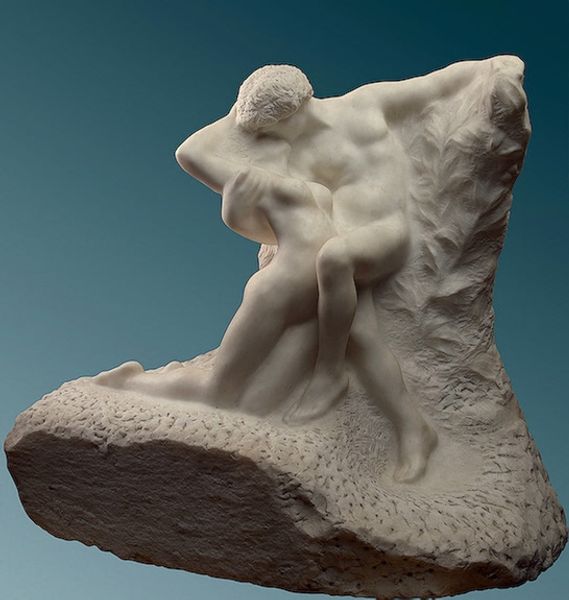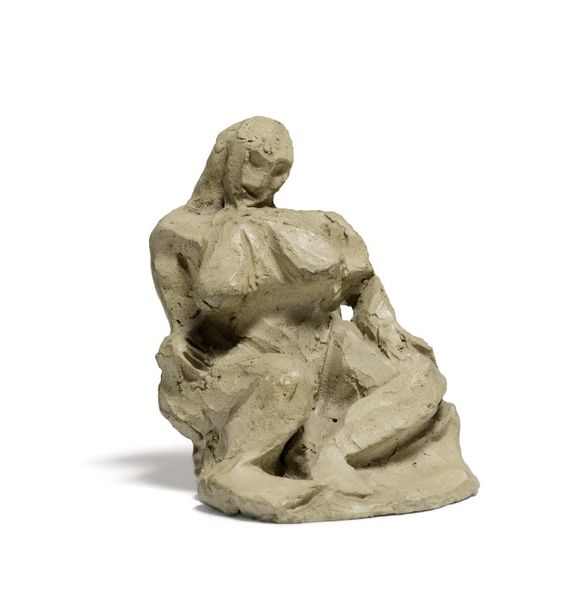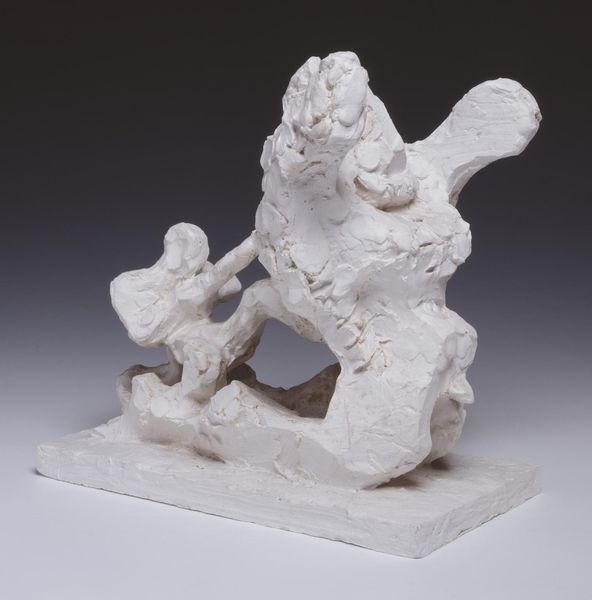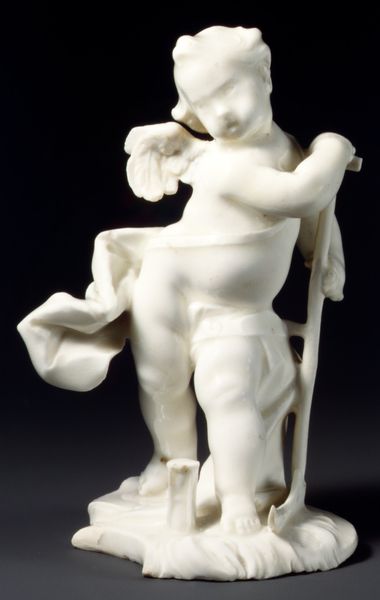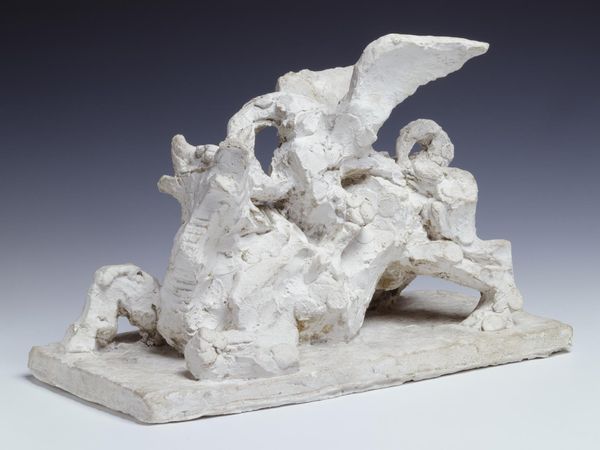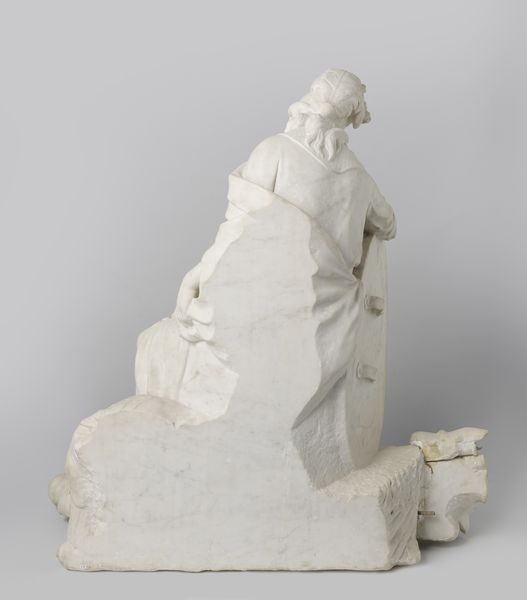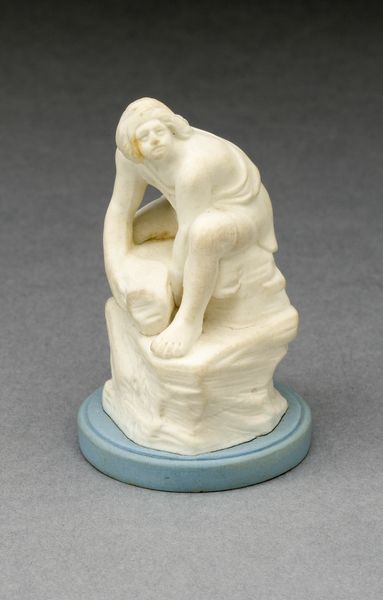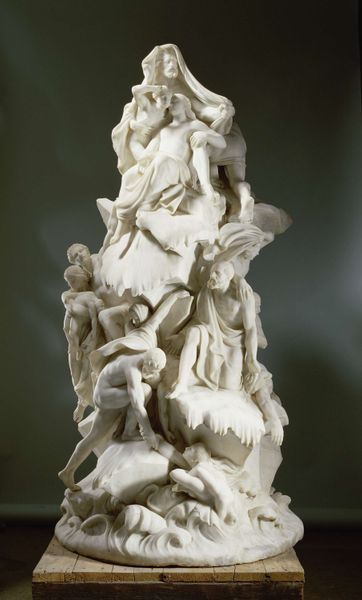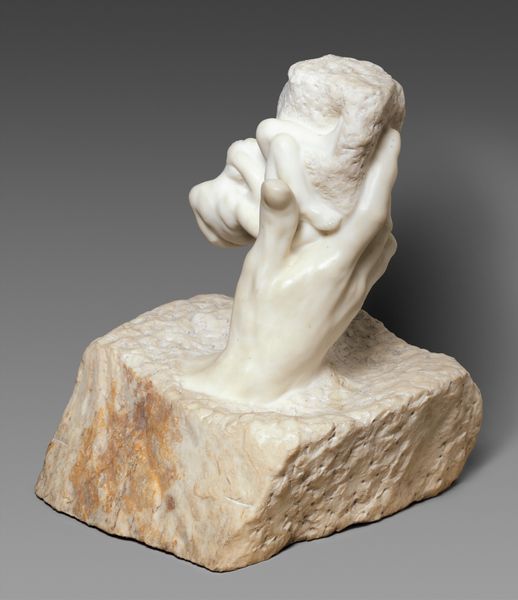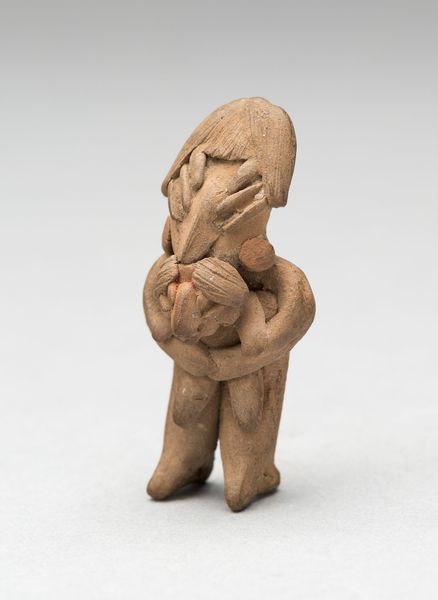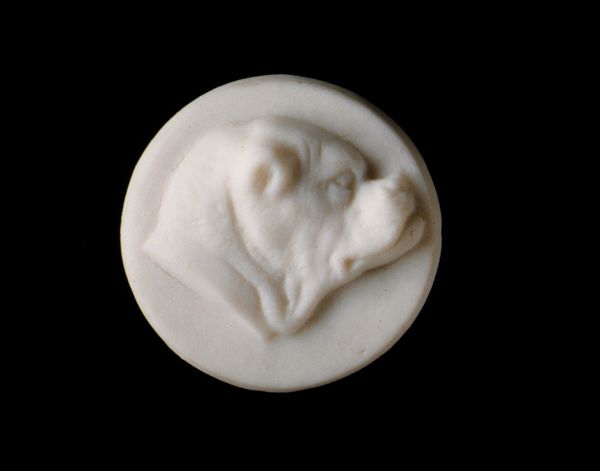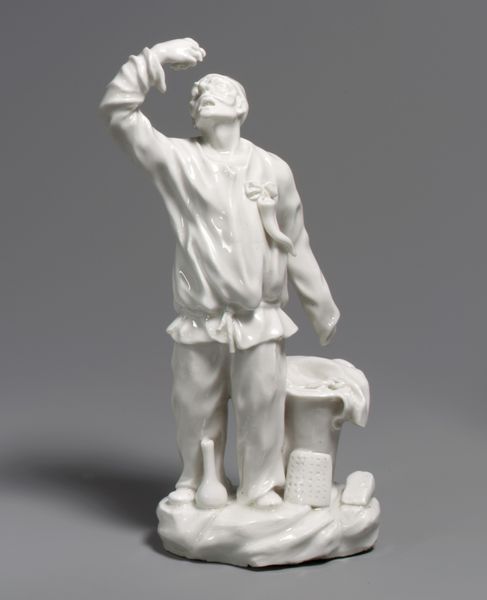
carving, sculpture, marble
#
portrait
#
carving
#
sculpture
#
figuration
#
sculpture
#
group-portraits
#
history-painting
#
marble
#
italian-renaissance
Dimensions: height 12 cm, width 9 cm, depth 6 cm
Copyright: Rijks Museum: Open Domain
Curator: Here we have "Three Men, Fragment" carved in marble by Antonio Mantegazza, sometime between 1475 and 1499, during the Italian Renaissance. It's striking, wouldn’t you agree? Editor: Yes, the stark whiteness and shallow relief give it an unfinished, dreamlike quality. Almost like figures emerging from the stone itself. What can you tell us about it? Curator: Well, marble as a material during the Renaissance wasn’t merely stone but a signifier of classical antiquity. Patrons often chose it to imbue their commissions with the gravitas and prestige associated with ancient Rome. I wonder what workshop practices went into obtaining such material? How did its quality reflect labor conditions? Editor: Intriguing! While the rough-hewn quality is aesthetically powerful, I’m also drawn to how Mantegazza rendered individual expression. Note the turned head of the central figure, a gaze of supplication. The piece conveys, despite its fragmentary nature, such intimate drama. Curator: Agreed, the interplay of the figures suggests a narrative – one wonders what scene is represented here and if this was a segment from a larger sculpture meant for a civic or even ecclesiastical function. How would it operate politically? Editor: The tension certainly implies a narrative context; each gesture communicates volumes, even incomplete as it may be. And speaking of form, notice the composition, nearly triangular in form? Quite standard for groupings dating back millennia. Curator: Considering its state, one might even explore whether its "fragmentary" nature contributes specifically to modern values placed upon artistic process as concept. If that was Antonio's design, imagine him to be critiquing material constraints and the consumption demands for polished perfection from future observers such as ourselves? Editor: Ah, framing imperfection not as a loss, but a conscious choice... interesting interpretation! I'm curious to linger, but it seems our time is coming to a close. Curator: Agreed, understanding materials offers great possibilities, but close analysis, indeed, generates deeper meanings. Editor: Yes, but as always, the combination creates better conversations.
Comments
No comments
Be the first to comment and join the conversation on the ultimate creative platform.
